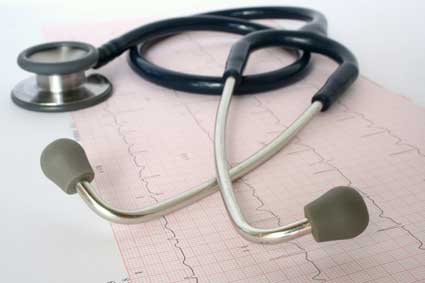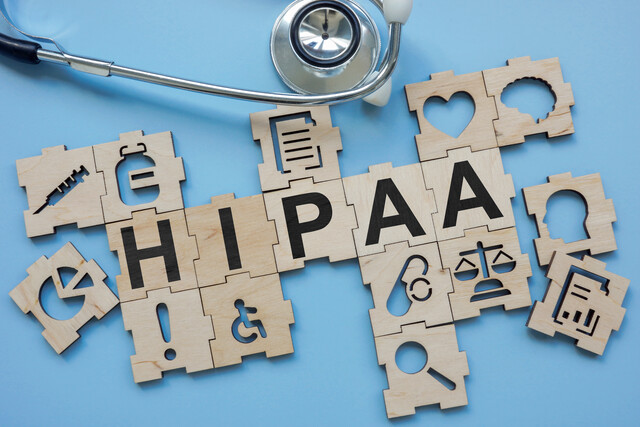HIV Infection: Prevention and Transmission
Introduction
Prevention of HIV infection and reducing the chance of transmitting the virus to others requires information, resources, and education. You can't help prevent the spread of a virus or disease without knowing how it functions, or how it is transmitted to others.
Some infections are caused by airborne bacteria or viruses, meaning they can be transmitted through a cough, sneeze, or saliva. HIV infections can be transmitted in several different ways, and knowing how it's transported is the first step toward preventing spread and transmission to others.
HIV Transmission and Safe Sex
According to the Centers for Disease Control and Prevention, the main mode of transportation and transmission of the HIV virus between one person and another comes from unprotected sex.
Men and women engaging in personal relations need to take precautions with their partners, especially if they don't know them very well. Some forms of sexual contact between partners carry a higher risk than others. Teenagers and adults need to inform themselves regarding such risks and how to reduce chances of infection.
Safe sex doesn't mean using a form of birth control, but a form of protection. Condoms worn by men are one of the main sources of protection for both men and women engaging in sexual activity. Birth control pills, foams, or gels will not protect an individual against most sexually transmitted diseases, known as STDs, or the HIV virus. The more partners an individual has, the higher the risk of acquiring HIV.
Health-Related Industry Precautions
Universal precautions in health care fields and patient care industries are one of the best methods of preventing HIV transmission and infection. Health care personnel should always take universal precautions when dealing with new patients in any scenario, as well as when providing basic care, such as toileting.
Universal precautions mean:
- Washing hands before and after patient care -- This means washing the hands with soap, vigorously cleansing the hands, and between the fingers and nail beds for at least 30 seconds. Rinse the hands well and dry on a paper towel, using the towel to turn off the faucet.
- Wearing protective gloves, eye protection, and disposable downs when treating or administering care to a person diagnosed with a communicable or contagious disease -- Protective gloves should also be worn when providing any catheter care, suctioning, feeding tube, and nasal gastric tube procedures. Gloves should be worn only once, and never reused. Peel gloves off from the wrist and down over the fingers, careful to touch only the wrist edges during disposal.
- Adequate decontamination or sterilization of clothing, bed surfaces, and bed sheets if a communicable disease is suspected -- Decontamination of bedding and clothing is not necessary unless blood is present or suspected. Some HIV-related conditions, such as hepatitis may require special precautions.
- Proper waste disposal, including double-bagging when necessary, as well as labeling waste or trash with biohazard stickers -- Health care workers are trained to treat any spillage or contamination with human blood as potentially infectious until otherwise notified. Common bodily fluids that may contain the HIV virus or contagious disease contaminants include:
- Visible blood in any body fluid
- Unknown body fluids
- Vaginal or seminal secretions
- Blood
Health care personnel are also trained to take precautions when handling feces, urine, vomit, or materials, tissues, or washcloths containing nasal secretions.
-
Needles, often called sharps, are required by law to be contained in disposable and identifiable puncture-resistant and leak-proof containers labeled with red biohazard labels or contained in red containers. Needles and any type of broken glass should be contained in these containers. Needles should not be reused, recapped, broken, or bent prior to disposal. Biohazard waste should be clearly labeled and identified for proper disposal. Double plastic bagging and use of red biohazard trash bags is determined by location. Biohazard waste is generally defined as:
- Any item that contains liquid or semi-liquid blood or other infectious bodily tissues, specimens, or fluids
- Bloody items such as clothing
- Contaminated sharps, which include broken glass or used needles
- Any item that may contain or retain potentially hazardous or infectious bodily fluids, as well as chemicals or materials that may contain infected blood
Health care workers are much more likely to experience exposure to Hepatitis B infection than HIV or AIDS. According to the Colorado Department of Public Health and Environment, nearly 9000 health care workers annually are exposed to, and contract, hepatitis B. Health care workplace OSHA (Occupational Safety and Health Administration) standards offer information regarding blood-borne facts and how to protect yourself when handling potential biohazard materials and sharps, needles, or syringes.
While incidents of health care workers contracting HIV or AIDS in the workplace is relatively rare, it can, and does, happen on occasion. Still, by far, the highest risk of viral infections to health care workers comes from hepatitis. Knowing and following universal precautions can protect you against both.
Take the time to understand the risks, communicability, transmission, symptoms, and potential complications for Hepatitis B and Hepatitis C if you're a health care worker, childcare worker, or geriatric caregiver.
Information and Education
Education and information is important for individuals in understanding not only how the HIV virus is transmitted, but also how it is not. The HIV virus is not transmitted during routine, average activities or interactions between adults. HIV is not transmitted through:
- Sharing a bathroom or bathroom fixtures
- Drinking fountains
- Mosquitoes
- Shaking hands
- Casual interaction or contact
- Hugging or holding hands
- Closed mouth kissing on the cheeks or lips
- Exposure to normal bodily fluids, such as tears, sweat, urine, or saliva that is not tainted with blood
The HIV virus is not spread on a breeze or in drinking water. Individuals engaged in normal daily activities are not typically at a risk of contracting an HIV virus through their daily activities or environment. Risks increase with drug use, multiple sex partners, unprotected sex, sharing needles with others, and otherwise engaging in activities or lifestyles that increase risk of transmission.
According to the Centers for Disease Control and Prevention (CDC), nearly one-third of HIV and AIDS-related cases in the United States come from the sharing of needles among injection-based drug users.
Sharing pre-chewed food with someone infected with the HIV virus is a less common mode of transmission, and is not commonly found in adults, although it has occurred in babies or toddlers after mothers infected with the virus chew food before giving it to their baby.
Another less common form of transmission, though rare, is being bitten by a person who carries the HIV virus. Such bites are often deep and severe with extensive tissue damage that has drawn blood. The CDC advises there is no risk of being exposed to the HIV virus if the skin isn't broken.
Another form of potential HIV transmission comes in the form of reused tattoo needles or in needles shared by drug users. Body piercing and tattooing carries a risk of HIV transmission, though numbers regarding incidents of infection have not been widely documented. Consumers should always ensure that tattoo parlors, or individuals who offer tattoos or body piercings, use clean and sterilized equipment.
Traditional HIV Treatment OptionsConclusion
This article has offered a very basic overview of how HIV is transmitted to others, as well as how to prevent HIV infections. Take the time to further delve into research, education, and information regarding transmission of HIV through government or medical based websites, such as the CDC, the Johns Hopkins AIDS Clinic, the Mayo Clinic, or other reputable health care departments and services.
Introduction
Drugs, medications, and therapies to treat individuals in various stages of the HIV disease have come far in the last two decades. Because the HIV virus and AIDS seemingly came out of nowhere in the early 1980s, initial treatments and drug therapies were nothing but a shot in the dark. As HIV and AIDS transmission spread, and more individuals experienced symptoms of HIV and AIDS, medical researchers focused their efforts on trying to understand what caused the disease, how it spread, and how it replicated.
Only in this way were (and are) medical researchers, scientists, and pharmaceutical manufacturers able to create medications that proved effective in relieving symptoms and improving quality of life. Medical research and clinical trials of new medications to treat HIV continue today. While the drugs and medications may have changed, the ultimate goal of finding a cure for individuals diagnosed with HIV or AIDS is still on the horizon.
Common Medications
Back in the early 1980s and 1990s, medical treatments for HIV relied on traditional drugs and therapies. Unfortunately, medical treatments and drugs at the time were only able to help relieve some of the symptoms of the virus. Eventually, researchers gained enough understanding of the virus to design new drugs that specifically attacked and damaged the HIV replication cycle.
In some cases, today's drugs can help delay the transition from HIV into AIDS, and many drugs and vaccinations, antibiotics and therapies can help reduce the number of complications an individual diagnosed with HIV or AIDS will experience. Most of these drugs and medications are considered traditional medicine.
Current protocols have helped slow progression of the disease process for some, and helped relieve symptoms in others.
One of the problems with modern medicine is that it takes so long to test certain drugs for effectiveness and safety in humans. Approving a drug for use by humans takes time, a lot of money, and jumping through governmental hoops and regulations. The Food and Drug Administration (FDA) is the organization in the United States that ultimately approves medications for use. Testing, clinical trials, and study of one medication alone can take 10 years or more.
Although it has taken years, prescription drugs have come a long way in helping to treat HIV and its accompanying symptoms. The first drugs utilized for those diagnosed with an HIV infection were antiviral or antiretroviral drugs. These medications were designed to attack the HIV virus structure itself, and inhibit its ability to reproduce. The first HIV drug approved by the FDA was AZT (azidothymidine). Following the creation of AZT, other drugs eventually came on the market: ddl (didanosine), ddc (zalcitabine, which is no longer manufactured), d4t (stavudine), and 3TC (Combivir - a combination of lamivudine and zidovudine).
Actually, new versions of antiretroviral drugs were being developed at such a rapid pace, that within a few months, new versions or drugs were available every few months. However, while the introduction of drugs and medications was underway, understanding how they worked on individuals diagnosed with various stages of the disease process was something else entirely. Some individuals responded well to one medication, while others responded well to a combination of the common HIV antiretroviral drugs.
This was a period that relied on a large amount of trial and error, experimentation, and careful observance of specific patients being studied in clinical trials. During this time, if it was realized that some antiretroviral drugs were more effective and important during certain stages of the HIV infection or disease process. Individuals diagnosed with HIV also were taking drugs to help prevent complications. Serious complications, such as pneumonia, tuberculosis, and meningitis often were more dangerous to the individual than the HIV virus itself.
While doctors understood which drugs to give for conditions like pneumonia or tuberculosis, understanding medication protocols for unexpected complications or side effects due to the weakened immune system were not known at that time. Yet other drugs that an individual with HIV took in the early 1990s were those that helped reduce the frequency and severity of symptoms such as anxiety, fever, nausea, pain, and diarrhea, among others. Unfortunately, some of these drugs also had side effects themselves. Known as an adverse drug reaction, a side effect produces an unexpected, or unwanted, symptom or result after taking the medication.
To make matters more complicated, individuals diagnosed with HIV are also often found to be especially susceptible to side effects such as allergic or toxic reactions to certain medications. This is because the immune system is already damaged at the time medications are given, prompting the body to respond immediately, and negatively, to additional foreign chemicals.
Traditional drugs taken by individuals diagnosed with HIV also attempted to attack the virus itself, including:
- AZT (Retrovir, Zidovudine) -- This medication was designed to treat a low white blood cell count, anemic conditions, headaches and nausea. In the mid 1990s, this medication cost $50 a week.
Today, individuals with HIV take multiple-drug therapies for greater efficacy. This drove costs higher, often costing more than $15,000 a year -- and that was in the mid-1990s. A typical drug regimen today may include:
- Epivir - an antiretroviral
- AZT - a retroviral
- B-12 injections - increase B-cell production
- Bactrim D.S. - for infections
- Biaxin - for infections
- Crixivan - used to treat viral infections, including Hepatitis C and HIV
- Diflucan - an antifungal
- d4t - an antiretroviral
- Effexor - an antidepressant
- Gamma globulin - helps boost immune system and protect against infection
-
Today, there are more than 20 FDA-approved antiretroviral drugs, although they are not necessarily approved and available in every country around the world. Five major groups of antiretroviral drugs have been approved by the American Food and Drug Administration between 1987 and 2007, with more developments on the way.
Individuals are started off with a certain combination of 1 to 3 medications. This is called a first line therapy. The doctor carefully monitors the patient and if it's determined the virus has become resistant to this combination of medications, or if the individual experiences severe side effects, a change to a second-line of therapy is typically recommended. Second-line therapy usually includes at least three new drugs, with one from each of the major classes of medication, in order to produce the greatest efficacy in treatment.
According to avert.org, an international HIV and AIDS charity, individuals are recommended against starting HIV treatment until they reach more advanced stages of the infection. A thorough assessment and examination, determination of coexisting factors, such as tuberculosis, hepatitis, or drug use, as well as the stage of the disease, will determine what type of medications a person will be offered.
In most cases, the cd4 test is the one used to determine the amount of cd4 in the body. CD4 is the protein that supplies a first line of defense for the immune system. In the United States, Great Britain, and most countries of Western Europe, treatments are generally started if the CD4 test shows fewer than 350 cell counts. In other countries, treatment may not start until the patient is at 200 or below.
In some cases, individuals have a choice in the combinations of drugs they can take. Again, this is a trial-and-error method for many, and some react better to the medication combination than others. It's extremely important for individuals to take the drugs specifically as they are prescribed. When deciding on a drug treatment, the doctor discusses a number of factors that are extremely important in the efficiency and effectiveness of the drug regimen. These factors include:
- Frequency of dosage
- Number of pills to be taken on a daily basis
- Food or liquid restrictions, as well as whether drugs should be taken on a full or empty stomach
- Potential side effects
- Potential drug interactions
-
Paying for Medicine
Today, the average yearly cost for HIV treatment ranges between $14,000 and $20,000 a year. Some newer HIV medications, such as Epzicom averages around $800 a month, and Aptivus averages a staggering $1,000 a month. Older or "traditional" medications such as Epivir averages about $350 a month, while Retrovir averages $400 a month.
To date, it is still extremely difficult for individuals diagnosed with HIV or AIDS to obtain health insurance. Social workers, health care agencies and AIDS groups and organizations often attempt to help such individuals obtain some sort of medical coverage to help pay for medications and care.
The recent changes in health care, known as the Affordable Care Act, introduced under the Obama administration, seeks to improve access to coverage for individuals with HIV and AIDS. New regulations prevent insurance companies from canceling the policies of individuals with HIV or AIDS unless fraud in the application is determined. In addition, no lifetime insurance benefits can be reduced if an individual is diagnosed with HIV. As of 2014, the Affordable Care Act will prevent insurers from denying coverage to anyone, or to impose annual limits on care or coverage. Such changes may help those with HIV and AIDS afford medications to provide comfort from symptoms, enhanced longevity and quality of life.
Conclusion
Dozens of medications are now utilized to treat HIV symptoms, the virus, and complications associated with the virus. Studies, new drugs and clinical trials continue on a daily basis.






























